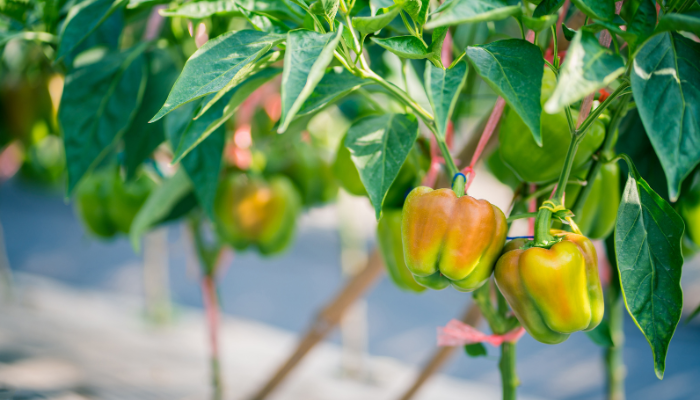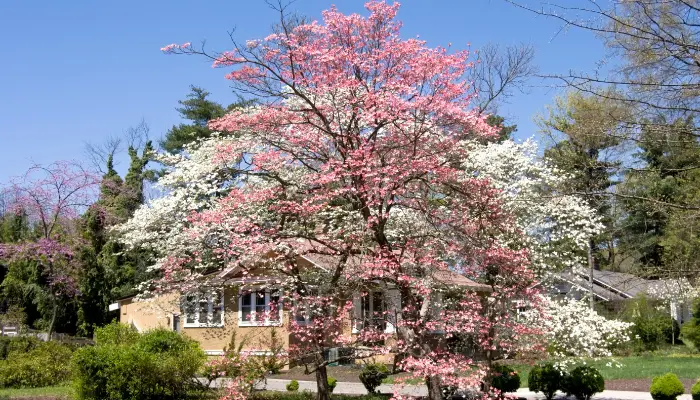What Temperature is Too Cold for Pepper Plants?
If you’re a pepper plant grower, you know that the temperature is a crucial factor in determining the success of your harvest. Too much heat can cause the plants to wilt, while too much cold can cause them to die. In this article, we will focus on the latter and answer the question: what temperature is too cold for pepper plants?
Pepper plants are native to tropical regions, so they thrive in warm and humid environments. If the temperature drops below a certain point, they can become dormant, and their growth can slow down, which can be detrimental to your pepper crop. Knowing the lowest temperature that pepper plants can tolerate is essential to ensure that they stay healthy and continue to produce fruit.
According to our research, the temperature that is too cold for pepper plants is 32°F (0°C). This is freezing, and the lowest temperature that pepper plants can tolerate. If your pepper plants are exposed to temperatures below this threshold, they can experience an extra wind chill or lower air temperatures that result in death from the cold at 37 degrees Fahrenheit (3°C).

Pepper Plants’ Temperature Needs
Pepper plants are sensitive to temperature changes and require specific conditions to grow properly. The ideal temperature range for pepper plants is between 70 to 85°F (21 to 29°C) during the day and 60 to 70°F (15 to 21°C) at night [1].
If the temperature drops below 60°F (15°C) at night, pepper plants may become dormant and stop growing. However, if the temperature drops below 50°F (10°C), it can cause damage to the plant, leading to stunted growth and reduced yield [1].
On the other hand, if the temperature rises above 90°F (32°C), it can cause the plant to wilt and even die. It’s important to note that pepper plants can tolerate high temperatures, but the quality and quantity of the fruit may be affected [2].
Pepper plants also have a minimum temperature threshold. The lowest temperature pepper plants can tolerate is 32°F (0°C) [1]. Temperatures below this point can cause damage to the plant, leading to death.
It’s important to monitor the temperature and protect your pepper plants from extreme weather conditions. You can use row covers, cloths, or other protective materials to shield the plants from cold and frost [4].
In summary, pepper plants require specific temperature ranges to grow properly. Temperatures below 50°F (10°C) or above 90°F (32°C) can cause damage to the plant, leading to stunted growth and reduced yield. The lowest temperature pepper plants can tolerate is 32°F (0°C), and it’s important to protect the plants from extreme weather conditions.
Identifying Too Cold Temperatures

Pepper plants are unable to tolerate extremely cold temperatures. If the temperature drops below 32°F (0°C), it is considered too cold for pepper plants to survive. Freezing temperatures can kill the plant tissue, causing the plant to die.
It is essential to monitor the temperature of your pepper plants regularly, especially during the winter months. If the temperature drops below 37°F (3°C), your peppers may experience extra wind chill or lower air temperatures, which can result in death from the cold.
If you live in an area with cold temperatures, you can protect your pepper plants by covering them with a frost cloth or plastic cover. This will help keep the temperature around the plant above freezing and prevent the plant from dying.
It is also important to note that prolonged exposure to cold temperatures can stunt the growth of pepper plants and prevent germination. Therefore, it is best to keep the temperature above 55°F (13°C) for healthy pepper plants.
In conclusion, identifying too cold temperatures is critical in ensuring the survival and growth of your pepper plants. Keep a close eye on the temperature and take necessary measures to protect your plants from the cold.
Effects of Cold Temperatures on Pepper Plants

Pepper plants are sensitive to cold temperatures. Exposure to cold temperatures can cause physical damage, growth inhibition, and fruit production decline.
Physical Damage
When pepper plants are exposed to cold temperatures, the water in their cells freezes and expands, causing the cells to rupture. This can result in visible damage to the leaves, stems, and fruit. The leaves may turn black and wilt, and the stems may become brittle and break easily. The fruit may also become discolored and develop soft spots.
Growth Inhibition
Cold temperatures can also inhibit the growth of pepper plants. When the temperature drops below the ideal range of 70 to 80 degrees Fahrenheit (21 to 27 degrees Celsius) for bell peppers and 70 to 85 degrees Fahrenheit (21 to 29 degrees Celsius) for hot peppers, the plants may stop growing altogether. This can delay the onset of flowering and reduce the overall yield of the plant.
Fruit Production Decline
Finally, exposure to cold temperatures can also cause a decline in fruit production. When pepper plants are exposed to temperatures below 55°F (13°C), their ability to produce fruit is significantly reduced. This is because the cold temperatures can damage the flowers and prevent them from setting fruit. As a result, the plant may produce fewer or smaller fruit than it would under optimal growing conditions.
To protect your pepper plants from the effects of cold temperatures, it is important to monitor the weather and take appropriate measures to protect them when necessary. This may include covering the plants with blankets or plastic sheeting, providing additional heat through the use of heaters or grow lights, or simply moving them indoors during periods of extreme cold.
Protecting Pepper Plants from Cold
If you live in an area where the temperature drops below 50°F (10°C), you will need to take steps to protect your pepper plants from the cold. Here are a few methods you can use to keep your plants warm and healthy during the colder months.
Indoor Cultivation
One way to protect your pepper plants from the cold is to bring them indoors. You can either move them to a warmer room in your house or grow them in a greenhouse. If you choose to move them indoors, make sure they get plenty of sunlight and are not exposed to drafts.
Use of Cloches and Row Covers
Cloches and row covers are another effective way to protect your pepper plants from the cold. These are essentially plastic or fabric covers that you place over your plants to create a mini greenhouse. They trap heat and prevent cold air from getting in. Make sure to remove the covers during the day to prevent overheating.
Mulching and Watering Techniques
Mulching and proper watering techniques can also help protect your pepper plants from the cold. Mulch can help insulate the soil and keep it warm, which can help protect the roots of your plants. Additionally, make sure to water your plants properly. Overwatering can lead to root rot, while underwatering can cause stress on your plants, making them more susceptible to cold damage.
By using these methods, you can help protect your pepper plants from the cold and ensure they stay healthy throughout the colder months. Remember to monitor the temperature and adjust your methods accordingly.
Recognizing and Addressing Cold Damage
Signs of Cold Stress
When pepper plants are exposed to temperatures below 50°F (10°C), they can experience cold stress. Signs of cold stress include:
- Wilting or drooping leaves
- Discoloration or browning of leaves
- Stunted growth
- Reduced fruit production
If you notice any of these signs, it’s important to take action to prevent further damage to your pepper plants.
Recovery Methods
If your pepper plants have been damaged by cold temperatures, there are several steps you can take to help them recover:
- Water your plants: Make sure your plants are well-watered to help them recover from cold stress. Avoid overwatering, as this can lead to root rot.
- Provide shade: If your plants are exposed to direct sunlight, provide some shade to protect them from further stress.
- Cover your plants: Covering your plants with a frost cloth or other protective covering can help protect them from cold temperatures.
- Prune damaged leaves: If your plants have damaged leaves, prune them to help the plant redirect its energy to healthy growth.
- Fertilize your plants: Fertilizing your plants can help them recover from cold stress. Use a balanced fertilizer with equal amounts of nitrogen, phosphorus, and potassium.
Remember, prevention is key when it comes to protecting your pepper plants from cold damage. Make sure to monitor the temperature and take action to protect your plants before they become stressed.
Conclusion
In conclusion, pepper plants are susceptible to cold temperatures and can be damaged or killed if exposed to temperatures below a certain threshold. According to our research, the lowest temperature pepper plants can tolerate is 32°F (0°C). At this temperature, there will be frost, which can kill unprotected pepper plants.
If you want to protect your pepper plants from cold temperatures, there are a few things you can do. First, you can cover your plants with a frost cloth or other protective covering to help insulate them from the cold. You can also move your plants indoors if possible, or grow them in a greenhouse or other protected environment.
Additionally, it’s important to be mindful of the temperature of the soil your peppers are growing in. Peppers grown from seed should not be exposed to soil colder than 75°F. If the soil is too cold, it can stunt seedlings or slow down the growth of mature plants.
Overall, taking the necessary precautions to protect your pepper plants from cold temperatures can help ensure a healthy and productive harvest. By monitoring the temperature and taking appropriate actions to protect your plants, you can enjoy a bountiful crop of delicious peppers.
Frequently Asked Questions
What is the lowest temperature pepper plants can tolerate at night?
Pepper plants can tolerate temperatures down to 32°F (0°C), which is the freezing point. However, they prefer warmer conditions, thriving best above 55°F (13°C). Prolonged exposure to cold can stunt growth and prevent germination. So, for healthy peppers, aim to keep them in warmer conditions.
What is the lowest temperature for bell peppers?
Bell peppers are a type of pepper plant, so they have the same temperature requirements as other pepper plants. They can tolerate temperatures down to 32°F (0°C), but prefer warmer conditions above 55°F (13°C) for optimal growth.
Can pepper plants survive winter outside?
Pepper plants are not frost-tolerant, so they cannot survive winter outside in areas with freezing temperatures. However, you can overwinter pepper plants indoors or in a greenhouse to keep them alive until the next growing season.
What temperature kills pepper plants?
A temperature of 32°F (0°C) or below will result in frost, which will kill pepper plants. A temperature below 55°F (13°C) will slow down the growth of mature pepper plants, and it will stunt seedlings. Peppers grown from seed should not be exposed to soil colder than 75°F (24°C).
What month do you plant peppers?
The best time to plant peppers depends on your location and the specific variety of pepper you’re planting. In general, you should plant pepper seeds indoors 8-10 weeks before the last expected frost date in your area. Once the seedlings have grown to 3-4 inches tall, you can transplant them outside in a sunny location with well-draining soil.
What temperature is too cold for pepper plants indoors?
Pepper plants grown indoors should be kept in a room with temperatures between 60-75°F (16-24°C). Temperatures below 60°F (16°C) can slow down growth and cause the leaves to turn yellow. If the temperature drops below 50°F (10°C), the plants may stop growing altogether.
References
- [1] “What Temperature Is Too Cold For Pepper Plants? (6 Tips To Protect …”. Gardening Mentor. Retrieved from https://gardeningmentor.com/what-temperature-is-too-cold-for-pepper-plants/
- [2] “How Much Cold Can Pepper Plants Tolerate? Really? – Plantophiles”. Plantophiles. Retrieved from https://plantophiles.com/gardening/cold-can-pepper-plants-tolerate/
- [4] “Protect Pepper Plants From Cold & Frost (11 Tips You Should Know)”. Green Upside. Retrieved from https://greenupside.com/what-is-the-lowest-temperature-pepper-plants-can-tolerate/








